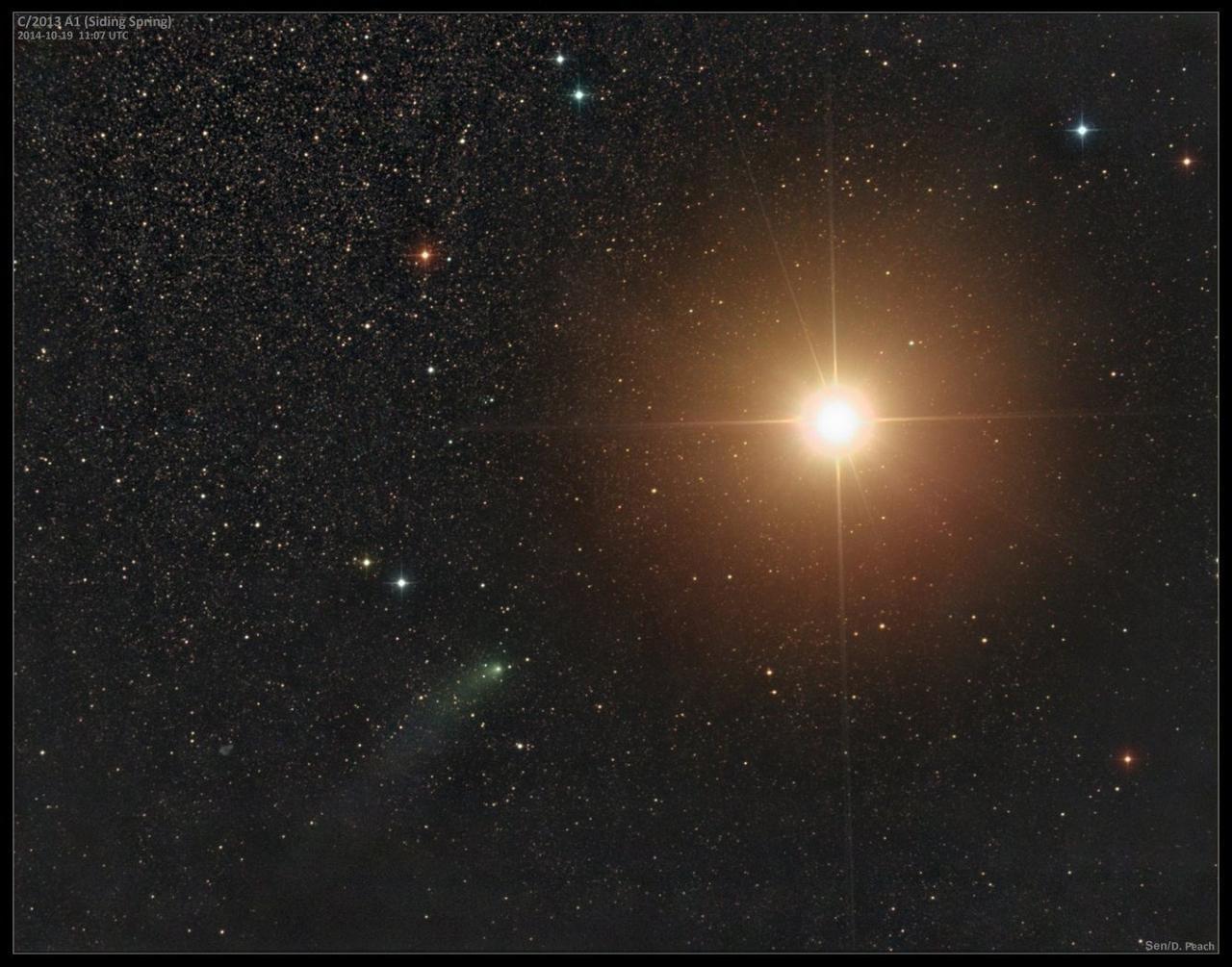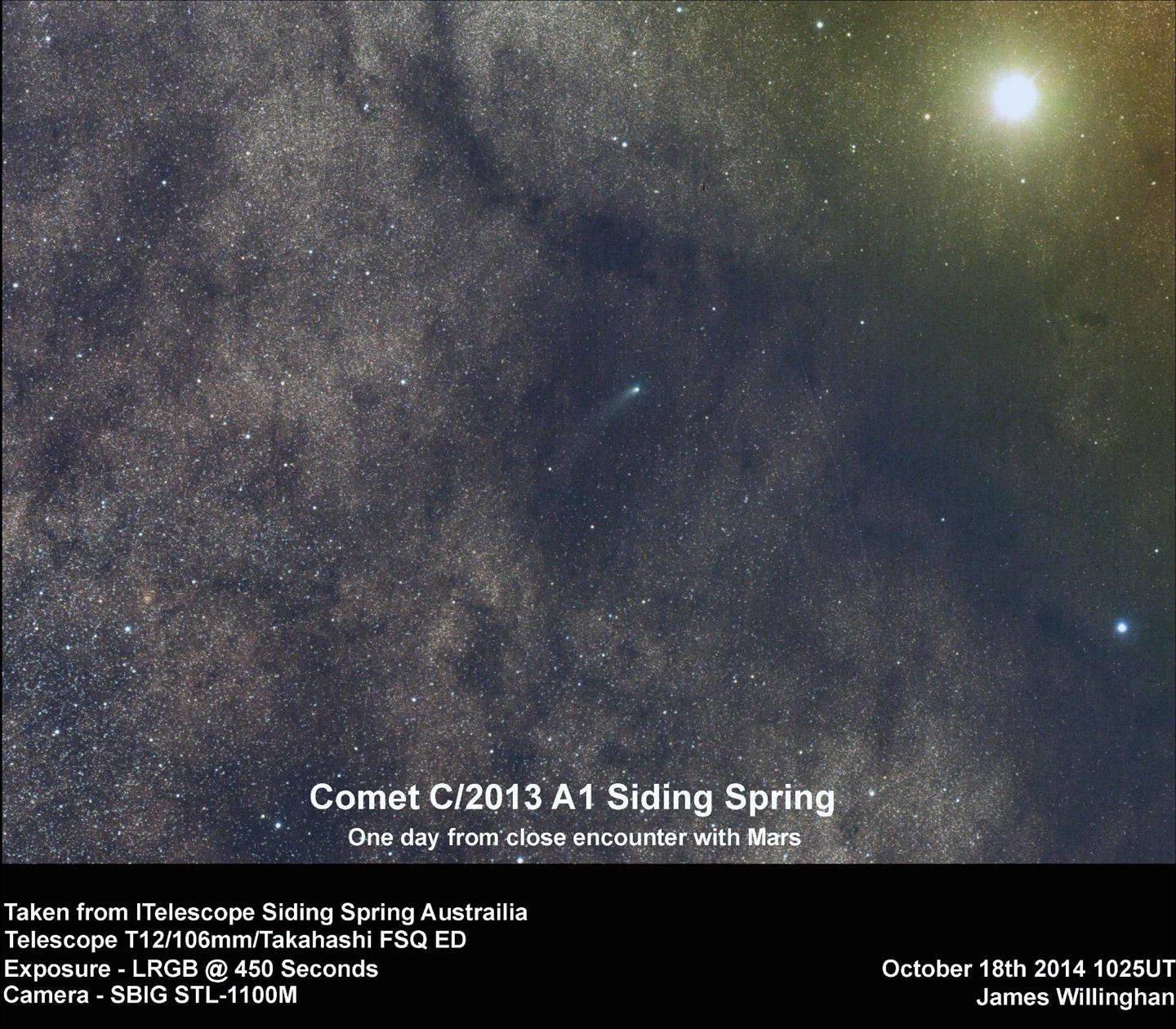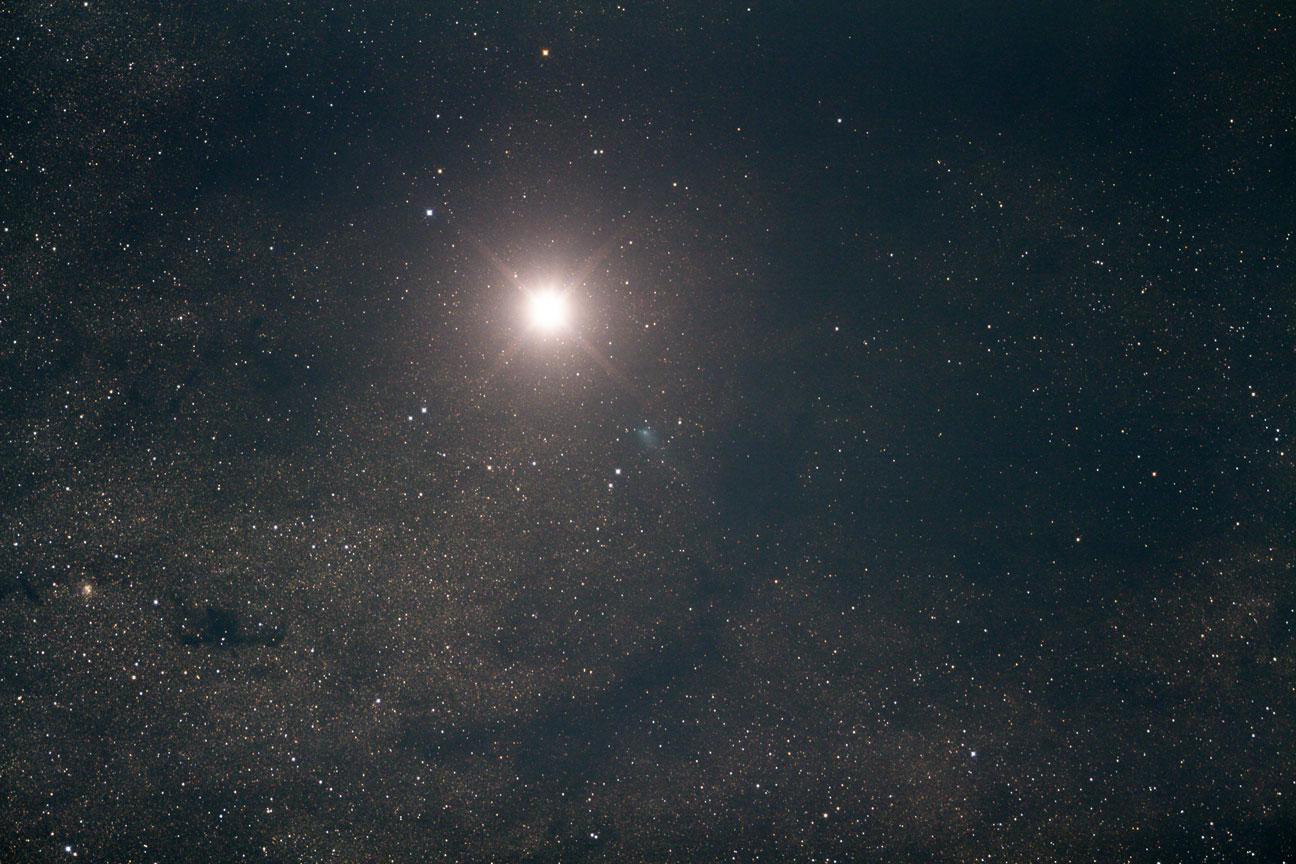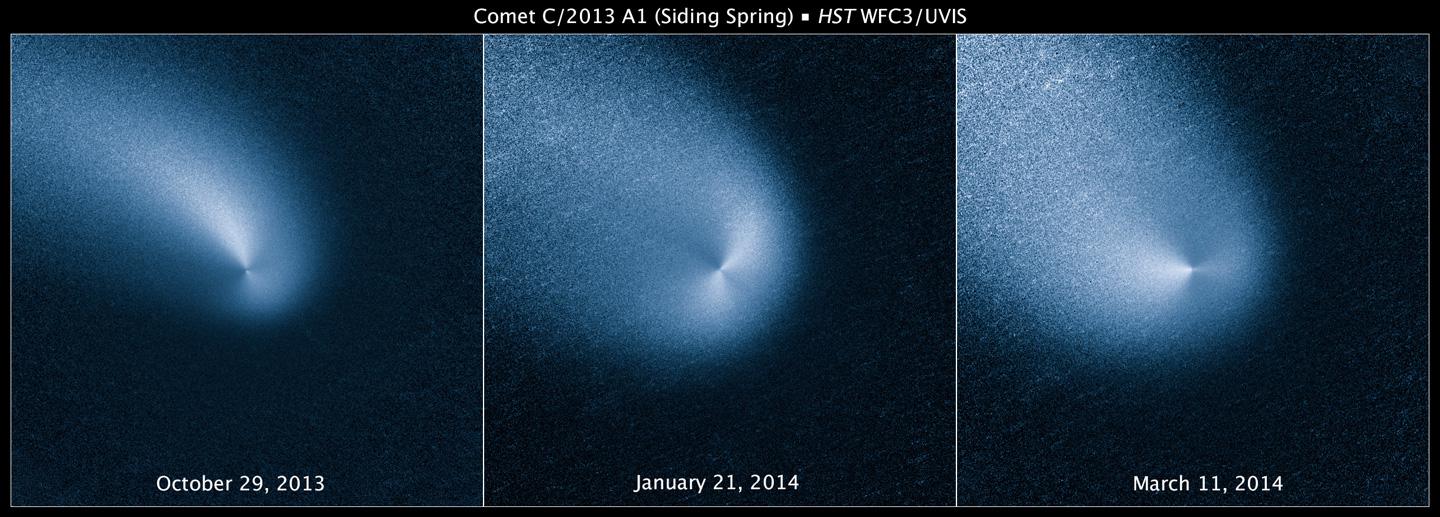Yesterday, Oct. 19, at approximately 18:30 UTC, Mars got buzzed by a comet.
The comet, named C/2013 A1 (Siding Spring), passed just 130,000 kilometers (80,000 miles) above the surface of Mars, the closest cometary encounter with a terrestrial planet ever seen. (The adjective is because Jupiter has been hit by several comets and asteroids in the past few years.)
Siding Spring is an Oort cloud comet, meaning it came from the very remotest regions of the solar system, almost certainly plunging into the inner system for the first time after billions of years in the dark. It chose quite a path for its first trip here! Mind you, the comet got three times closer to Mars than the Moon is to Earth. This was a close shave indeed.
NASA and other space agencies took precautions, moving their orbiting probes to the far side of the Red Planet during closest approach while the rovers were pretty much on their own. Happily, they all appear to be fine, even after the comet dropped tons of material into the atmosphere at dozens of kilometers per second.
We’re still awaiting images taken from those probes, but in the meantime, quite a few dramatic pictures were taken from Earth. Here are a few of the ones I like best … and if you want to learn more about comets, may I humbly suggest my own Ten Things You Don’t Know About Comets page when you’re done perusing these images?

Photo by Sen/Damian Peach
Master astrophotographer Damian Peach (seriously, go check his stuff out) took this shot at 11:07 UTC on Oct. 19. Mars is obvious enough—it’s shining at about first magnitude, one of the brightest objects in the sky—and the comet appears ghostly green to the lower left. Mars is very roughly 10,000 times brighter than the comet, making this a difficult observation! Right now, Mars is lined up very near the center of the Milky Way, so the background is filled with stars, providing a stunning backdrop to an already stunning image.

Photo by NASA/JPL-Caltech/Cornell Univ
Updated Oct. 20, 2014 at 15:00 UTC: It looks like we may have the very first image of a comet taken from the surface of another planet! The Opportunity rover took this shot of the Martian sky about 2.5 hours before the comet’s closest approach. It’s a raw image, taken right off the server, so it has not been cleaned up; the streaks and blips you see are cosmic ray hits (fast subatomic particles) to the detector. The image was noisy, with lots of “salt-and-pepper” features, so I blurred it a tiny bit to smooth those out. In the center is a fuzzy, elongated blob, and I do believe that’s Siding Spring. We’re still waiting for data from the other rovers and spacecraft, but this is the first picture of the comet we’ve seen actually from Mars! Tip o’ the Whipple Shield to James Canvin for the image and information.

Photo by NASA/JPL-Caltech/Cornell Univ.
Updated Oct. 20, 2014 at 22:30 UTC: Here’s a cleaned and annotated version of that Opportunity image, released by NASA. Some of the streaks are actually stars (my apologies for not mentioning that in the update above). The image has been cleaned a bit, so the sky is darker and the comet is easier to spot.

Photo by James Willinghan, used by permission
Updated Oct. 20, 2014 at 22:30 UTC: I like this photo by James Willinghan mostly because the comet is framed so well in the center of a galactic dust cloud, making it easier to see. The curve of the tail is obvious too, due to the comet’s motion as it orbits the Sun. Looks like a satellite moved through his field of view as well; see it?

Photo by Gianluca Masi/Virtual Telescope Project
Did I mention how tough it is to get a shot of the pair? The Virtual Telescope Project barely captured the comet (marked with lines) at 17:00 UTC, while Mars nearly blasts out the detector (the thick vertical line through Mars is due to blooming, where the detector overflowed due to the planet being so bright). This stack of nine 60-second exposures was guided on the comet’s movement, so the stars are streaked a bit. It was taken at twilight when the duo were just 15° above the horizon, so this was challenging to say the least. The large fuzzy circles are from Mars light reflected multiple times inside the telescope.

Photo by N.Howes/R.Wodaski/Tzec Muan Foundation
Astronomers Nick Howes and Ron Wodaski opted to go with a wide-field image (Siding Spring is to the lower right of Mars), which really emphasizes the stars and ribbons of dust in the galaxy, hundreds of trillions of kilometers farther away than Mars and the comet. In case you needed a crushing sense of scale today.

Photo by NASA/JPL-Caltech
NASA’s Wide-Field Infrared Survey Experiment took multiple images of the comet back in July 2014. The comet’s motion is apparent as it slid between a bright star to the lower right and the galaxy NGC 1316 to the upper left. It appears red because the dust (as well as possibly carbon dioxide and carbon monoxide) released from the solid nucleus as it neared the Sun glows at the longest wavelengths WISE can see—far into the infrared, well outside what our own eyes can detect.

Photo by NASA, ESA, and J.-Y. Li (Planetary Science Institute)
Of course, Hubble got in on the action as well. It took several images of the comet, and you can see activity changing the comet’s appearance over several months as ice on and beneath its surface is heated by the Sun, turns into gas, and spews out via jets.
As time goes on we’ll see more fantastic pictures of this once-in-several-million-years event, and I’ll post ‘em as I find ‘em. Check back soon!